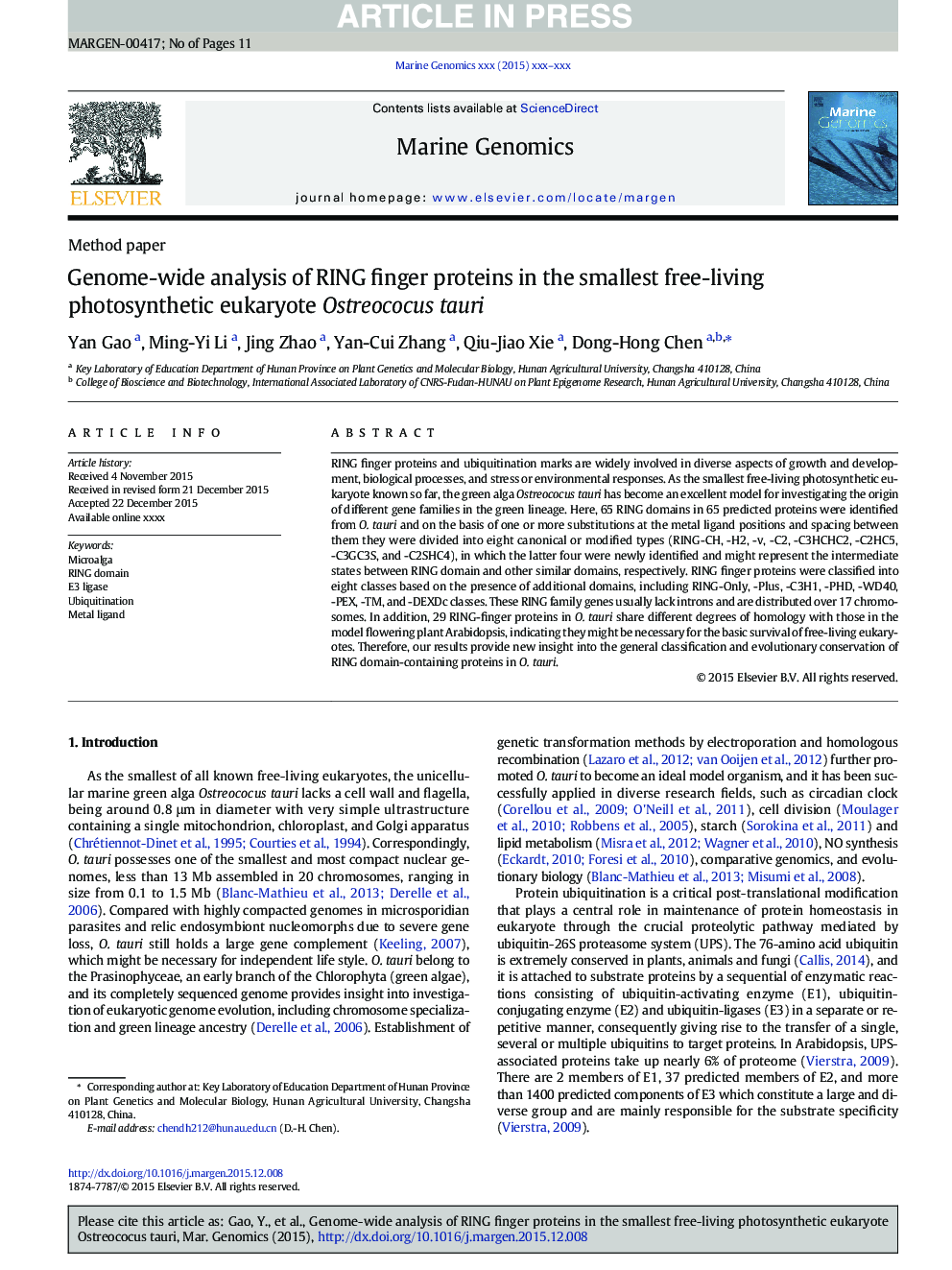| Article ID | Journal | Published Year | Pages | File Type |
|---|---|---|---|---|
| 8388292 | Marine Genomics | 2016 | 11 Pages |
Abstract
RING finger proteins and ubiquitination marks are widely involved in diverse aspects of growth and development, biological processes, and stress or environmental responses. As the smallest free-living photosynthetic eukaryote known so far, the green alga Ostreococus tauri has become an excellent model for investigating the origin of different gene families in the green lineage. Here, 65 RING domains in 65 predicted proteins were identified from O. tauri and on the basis of one or more substitutions at the metal ligand positions and spacing between them they were divided into eight canonical or modified types (RING-CH, -H2, -v, -C2, -C3HCHC2, -C2HC5, -C3GC3S, and -C2SHC4), in which the latter four were newly identified and might represent the intermediate states between RING domain and other similar domains, respectively. RING finger proteins were classified into eight classes based on the presence of additional domains, including RING-Only, -Plus, -C3H1, -PHD, -WD40, -PEX, -TM, and -DEXDc classes. These RING family genes usually lack introns and are distributed over 17 chromosomes. In addition, 29 RING-finger proteins in O. tauri share different degrees of homology with those in the model flowering plant Arabidopsis, indicating they might be necessary for the basic survival of free-living eukaryotes. Therefore, our results provide new insight into the general classification and evolutionary conservation of RING domain-containing proteins in O. tauri.
Related Topics
Physical Sciences and Engineering
Earth and Planetary Sciences
Earth and Planetary Sciences (General)
Authors
Yan Gao, Ming-Yi Li, Jing Zhao, Yan-Cui Zhang, Qiu-Jiao Xie, Dong-Hong Chen,
